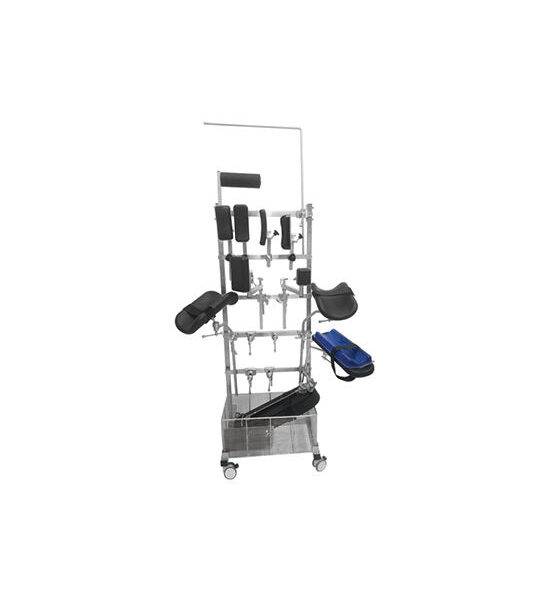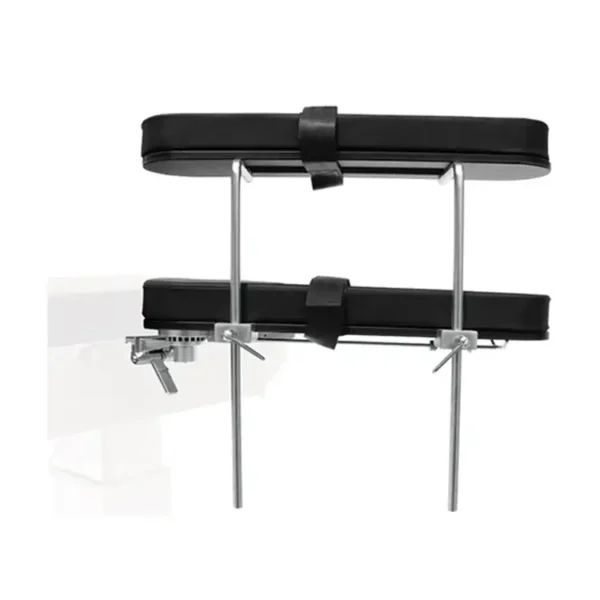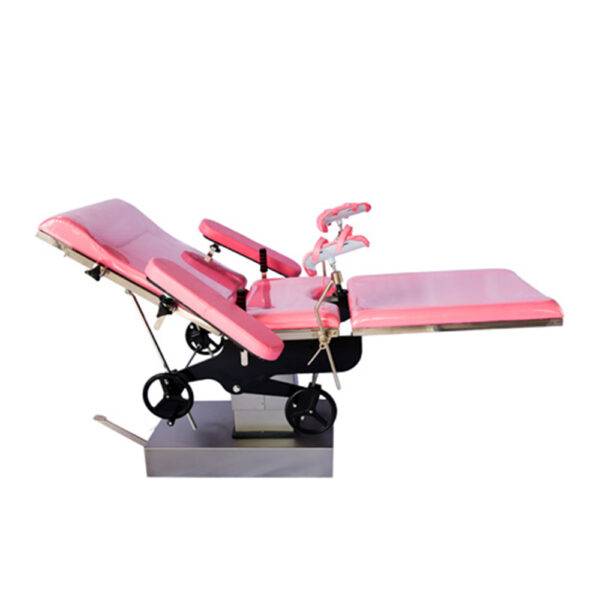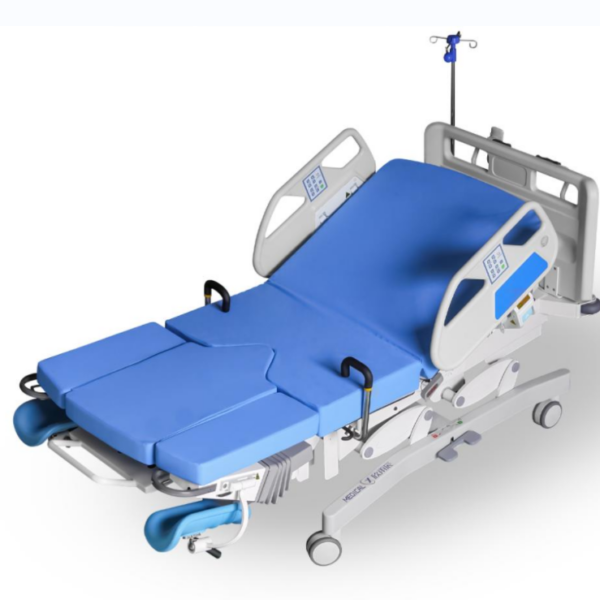Die Anschrift
304 Nordkardinal St.
Dorchester Center, MA 02124
Arbeitsstunden
Montag bis Freitag: 7:00 - 19:00
Wochenende: 10:00 - 17:00
Die Anschrift
304 Nordkardinal St.
Dorchester Center, MA 02124
Arbeitsstunden
Montag bis Freitag: 7:00 - 19:00
Wochenende: 10:00 - 17:00

Wenn es um die Auswahl der richtigen Ausstattung für Ihre medizinische Einrichtung geht, ist ein manuell-hydraulischer Operationstisch eine wichtige Investition. Diese Tische bieten Flexibilität, Zuverlässigkeit und Präzision und sind daher im chirurgischen Umfeld unverzichtbar. Dieser Blogbeitrag erläutert Ihnen die wichtigsten Merkmale, auf die Sie bei der Auswahl eines manuell-hydraulischen Operationstisches achten sollten, damit Sie eine fundierte Entscheidung treffen können.
Wenn es um die Auswahl der richtigen Ausstattung für Ihre medizinische Einrichtung geht, ist ein manuell-hydraulischer Operationstisch eine wichtige Investition. Diese Tische bieten Flexibilität, Zuverlässigkeit und Präzision und sind daher im chirurgischen Umfeld unverzichtbar. Dieser Blogbeitrag erläutert Ihnen die wichtigsten Merkmale, auf die Sie bei der Auswahl eines manuell-hydraulischen Operationstisches achten sollten, damit Sie eine fundierte Entscheidung treffen können.

EIN Manual Hydraulic Operating Table must provide exceptional stability to ensure patient safety and surgical precision. Look for tables with a robust base and high-quality hydraulic mechanisms that prevent any wobbling or movement during procedures.
The durability of the table is equally crucial. Opt for models constructed from high-grade stainless steel or other durable materials that resist corrosion and wear over time. This ensures a longer lifespan and consistent performance, even with frequent use.
EIN Manual Hydraulic Operating Table should offer a wide range of adjustments to accommodate various surgical needs. This includes height adjustment, Trendelenburg and reverse Trendelenburg positions, lateral tilt, and backrest adjustments.
Versatile tables have multiple sections that can be independently adjusted. This allows for greater flexibility in patient positioning, which is essential for different types of surgeries.
| Besonderheit | Beschreibung |
|---|---|
| Höhenverstellung | Allows the table to be raised or lowered as needed. |
| Trendelenburg-Position | Tilts the patient head-down. |
| Reverse Trendelenburg | Tilts the patient head-up. |
| Seitliche Neigung | Tilts the table sideways for better access. |
| Rückenlehnenverstellung | Adjusts the angle of the backrest for optimal positioning. |
| Einstellung der Beinpartie | Adjusts the angle of the leg section for comfort. |









The efficiency and user-friendliness of the hydraulic mechanism are key components that determine the overall ease of operation of a Manual Hydraulic Operating Table. A high-quality hydraulic system should operate smoothly and quietly, allowing for seamless adjustments without causing any disruptions during surgical procedures. The hydraulic mechanism is the heart of the table’s functionality, enabling precise control over various adjustments such as height, tilt, and positioning.
In addition to smooth operation, the hydraulic system should require minimal physical effort. This ensures that medical staff can make necessary adjustments quickly and efficiently, which is particularly important during long or complex surgeries where time and precision are critical. Reliable hydraulic systems reduce the risk of mechanical failure, providing consistent performance over time.
The design of the control interface is another critical factor in the ease of operation of a Manual Hydraulic Operating Table. Controls should be intuitive and user-friendly, allowing medical personnel to make adjustments swiftly and accurately. This often includes a combination of foot pedals and hand controls, which provide flexibility depending on the surgical scenario.
Foot pedals are particularly useful as they allow surgeons and nurses to adjust the table without using their hands, maintaining sterility and focus on the patient. Hand controls should be ergonomically designed, easily accessible, and clearly labeled to avoid any confusion during critical moments.
Quick adjustment features enhance the operational efficiency of a Manual Hydraulic Operating Table. For instance, some tables offer preset positions that can be activated with a single control, enabling rapid transitions between common surgical positions. This feature is particularly beneficial in emergencies or during surgeries that require frequent positional changes.
Moreover, the responsiveness of the controls is crucial. There should be no lag or delay between activating the control and the table responding to the command. This immediate response is vital for maintaining the flow of the surgery and ensuring patient safety.
Ease of operation also extends to the training and familiarization process. A Manual Hydraulic Operating Table should come with comprehensive training materials and user manuals. Manufacturers often provide training sessions to ensure that all medical staff are well-versed in operating the table efficiently and safely. This training includes understanding the full range of adjustments, emergency protocols, and maintenance procedures.
Regular maintenance is essential to keep the Manual Hydraulic Operating Table operating smoothly. The table should be designed for easy maintenance, with accessible components that can be quickly checked and serviced. A good table design will include features such as easily replaceable hydraulic fluid, accessible lubrication points, and straightforward troubleshooting guides.
In addition to standard controls, a Manual Hydraulic Operating Table should be equipped with emergency release mechanisms. These features allow the table to be quickly adjusted or lowered in case of power failure or hydraulic malfunction. Such safety measures ensure that the patient can be stabilized promptly, minimizing risks during unforeseen circumstances.
Modern surgical environments often utilize a range of medical equipment that needs to be seamlessly integrated with the operating table. A well-designed Manual Hydraulic Operating Table will be compatible with various attachments and accessories, such as anesthesia screens, armboards, and leg supports. The ease with which these can be attached or detached without interfering with the table’s primary functions adds to the overall ease of operation.
.jpg)
Patient comfort is paramount. Ensure the table is equipped with high-quality padding that provides adequate support while being easy to clean and maintain.
Safety features such as side rails, locking mechanisms, and emergency release options are essential. These features help protect the patient from falls and other potential hazards during surgery.
Some Manual Hydraulic Operating Tables come with casters, making it easier to move them between different operating rooms. Check for tables with lockable casters to ensure they remain stationary during use.
Consider the storage options when the table is not in use. Tables that can be easily folded or have removable sections can save valuable space in your facility.
A table that is easy to clean and maintain is essential for ensuring hygiene and prolonging the table’s lifespan. Look for tables with seamless surfaces and removable pads.
Reliable customer support and warranty options from the manufacturer are important. This ensures you can get assistance when needed and that any issues can be resolved quickly.
Die Wahl des richtigen Manual Hydraulic Operating Table is crucial for the efficiency and safety of your surgical procedures. By focusing on stability, adjustability, ease of operation, patient comfort, mobility, and maintenance, you can select a table that meets your facility’s needs and enhances your surgical team’s performance. Investing in a high-quality Manual Hydraulic Operating Table ensures reliability and precision, ultimately contributing to better patient outcomes.
A Manual Hydraulic Operating Table is a surgical table that uses hydraulic mechanisms to adjust its position and height. It is operated manually, typically through foot pedals or hand controls.
The primary difference is in the mode of operation. Manual tables use hydraulic systems and require physical effort to adjust, while electric tables use motors and can be adjusted with minimal effort, often via remote control.
Manual tables are generally more affordable, require less maintenance, and can be used in environments where electric power is not reliable.
Yes, these tables are designed with multiple safety features, including locking mechanisms, side rails, and emergency release options to ensure patient and operator safety.